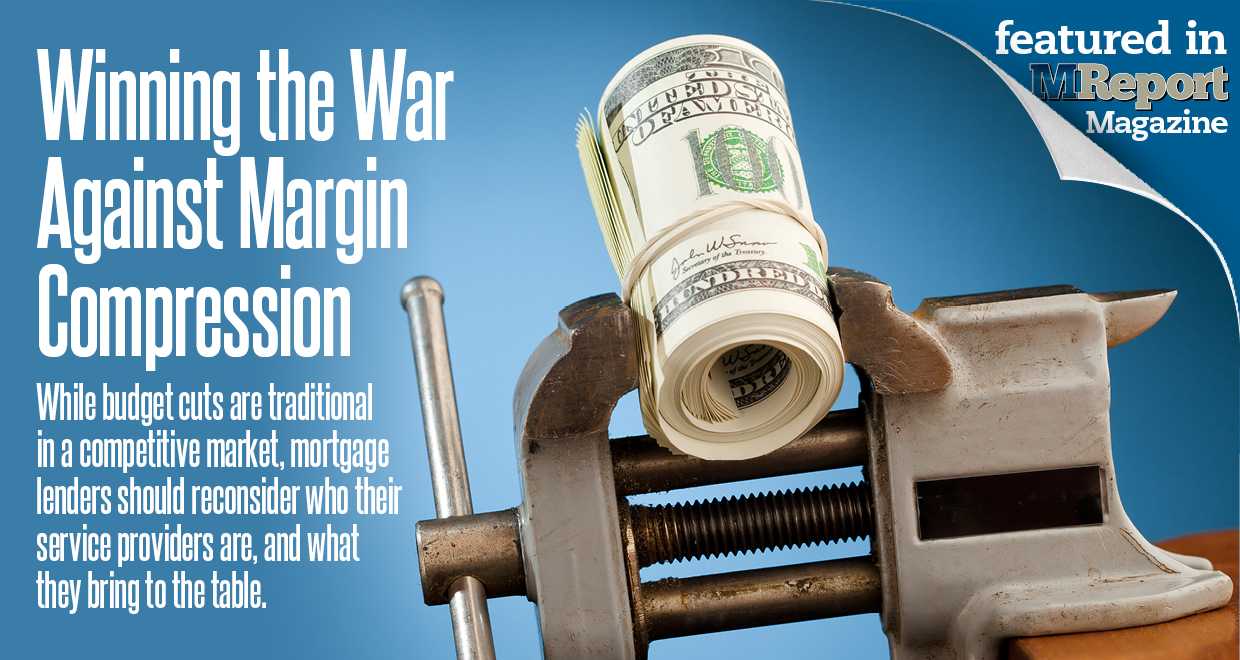
There’s no way to sugar-coat it: margin compression is imminent for mortgage lenders. In fact, for a significant number, it’s already having an impact. Fannie Mae’s Mortgage Lender Sentiment Survey for Q2 2021 represented a third consecutive quarter in which lenders themselves, typically optimistic about future market cycles, expressed pessimism as to coming profits, with 69% of those surveyed claiming they expected margins to decrease in the third quarter. So far, the market has borne that prediction out.
A Shifting Market
The traditional causative factors for widespread margin compression are all evident. The mortgage industry, coming off of a year of record volumes, has been experiencing the expected reduction in sales volume (even though 2021 has been a robust year, no one truly expected to see the volume of 2020 repeated). The inherently increased complexity of the typical purchase transaction has, in and of itself, led to increases in production cost, especially as compared to the comparatively streamlined refinance mortgage which powered a majority of the origination volume in 2020. Additionally, some lenders, forced to expand production capacity during the surge of last year, have been slow to ramp down, leading to productivity decreases as well. Other mortgage firms, having made extensive technology and operational investments to improve their processes during the boom, are starting to see the invoices for those investments without the benefit of record revenue.
Now, add the likelihood of an increasingly active regulatory and enforcement environment, and the need for compliance resources, and the result is all but inevitable. Mortgage lenders will be facing widespread margin compression for the foreseeable future.
Traditionally, most businesses have addressed margin compression in a number of ways. Many mortgage lenders have already taken the dive into increased automation and improved technology for just that reason. And while that course is typically sound, the ROI isn’t always immediate, and if strategic mistakes were made at the time of investment (for example, implementing new technology that doesn’t fit a lender’s tech stack optimally, or not taking full advantage of the technology’s capabilities) those investments could actually prove even more costly in the future.
Other time-honored traditions for attacking margin compression have been with us for centuries, and tend to focus on trimming expenditures. Those tactics could include personnel cuts, discretionary and nonessential budget cuts, and even decreasing the budget for resources and support departments that aren’t directly tied to profit centers. Of course, all of these can bring significant pain and impair operations simultaneously.
There is, however, another way lenders can attack margin compression.
A Different Path
It’s not a novel concept, but it’s not utilized as widely in the mortgage industry as it is in others. Because the mortgage transaction is inherently one that requires a wide vendor or service provider network, especially for lenders transacting business in multiple regions or even nationwide, the expense of managing and retaining vendors can be significant. The direct costs are obvious, but there are indirect considerations as well. What if a vendor is at risk for compliance violations? Will the substandard service provider have a negative impact on return clients and branding? Is the lender forced to maintain large, costly vendor management resources because its service provider network is so varied and disparate?
The fact is, especially for midsized to large mortgage lenders, that streamlining its service provider network—be it in the title, closing, appraisal, or other outsourced facets of the purchase mortgage transaction—can bring tremendous time and cost savings and assist in the battle against shrinking margins. This approach is a classic means of building scale into a business’ operations in numerous industries. Good service providers able to provide extensive or even national coverage are also able to leverage economies of scale in their own right, helping to improve a lending partner’s margins directly as well as indirectly.
It is also simply less time consuming and less expensive to manage fewer vendors, especially if they are able to process the same or similar amount of throughput the lender had previously relied on a higher number of partners to manage. It means a need for smaller vendor management resources. It means decreased administrative requirements. Plus, reducing the number of touchpoints between lender and provider also means improved communications, reporting, and oversight, not to mention the ability to adjust to market conditions faster.
The Way Forward
It shouldn’t be forgotten that this process should begin with a thorough vetting and analysis. Not every large or national service provider is built the same way. Big isn’t automatically better. Lenders should be certain the selected providers, in addition to being able to manage large amounts of volume, are operating efficiently in their own processes … and that their own compliance programs are updated, enforced, and continuously improving. In an active enforcement environment, it could only take one violation and enforcement action to turn a lender’s biggest concern from margin compression to being able to keep the lights on if the violation is significant. And while lenders aren’t always directly responsible for a service provider’s compliance failures, there are innumerable ways in which a vendor that isn’t minding its compliance requirements can damage its lender clients.
In a competitive marketplace where lenders may well be cutting back on their support resources, there are a number of nationally capable service providers who also deliver added value to their clients in those very areas. A service provider can be a powerful asset to a lender doing business in numerous states, even if just by helping the lender stay abreast of legal developments that could affect them. A lender consolidating its service network should strongly consider what resources, in addition to the core service for which it’s contracted, a service provider can add to the picture. These can include various types of training, compliance, and even technologies that directly benefit the lender with increased cost savings or by helping to compensate for a lender’s diminished expenditures on in-house support resources.
Finally, a lender seeking to consolidate its service provider network should be seeking out potential partners who, while large enough to manage significant volume effectively and cost-efficiently, is still nimble enough to align its processes with a lender’s workflow. If a service provider cannot provide a seamless link to a lender’s preferred LOS, for example, the savings gained through consolidation in the first place will inevitably be diminished at some point, especially in a market where cost and turnaround time are crucial.
A competitive purchase market is something the mortgage industry has not truly seen in a significant amount of time. In all likelihood, some lenders, having entered the market during the “easy money” days of the refi boom, are just as likely to bow out in the coming months. However, just as was the case in years past during the transition from one market cycle to another, most mortgage lenders will choose to compete in what will remain a strong market. The best lenders, however, will thoughtfully consider their strategies for addressing the inevitable shrinking of margins. And quite a few of those winning strategies, at least for multi-regional or national lenders, will include the thoughtful consolidation and leveraging of their national service provider networks.

 theMReport.com Your trusted source for mortgage banking news
theMReport.com Your trusted source for mortgage banking news









